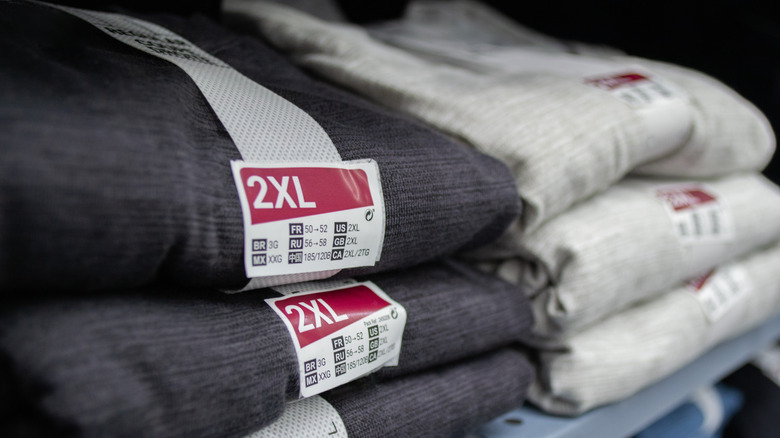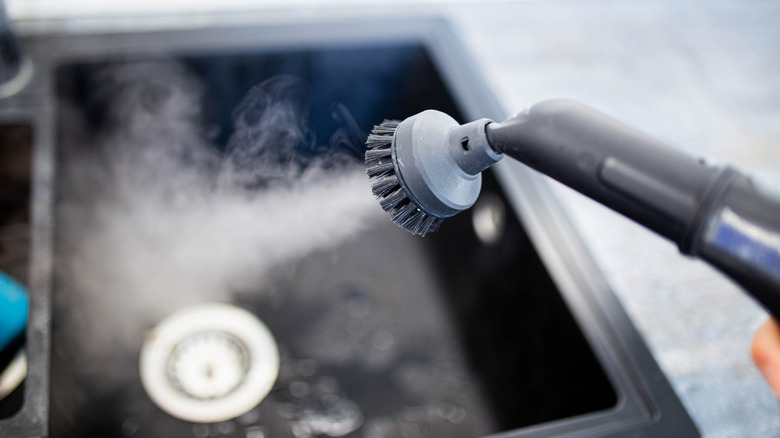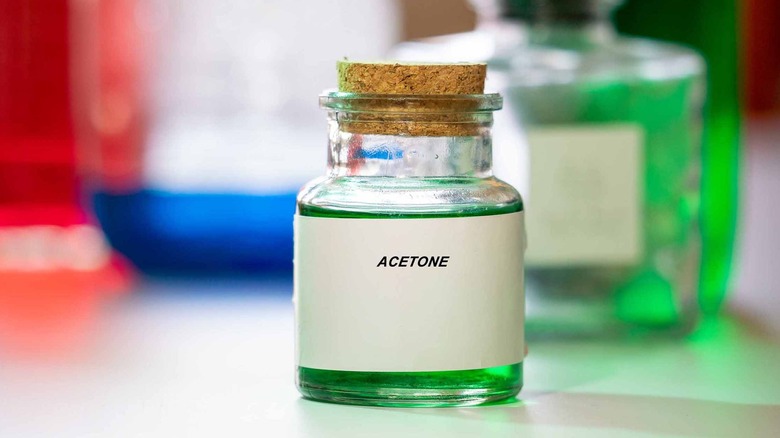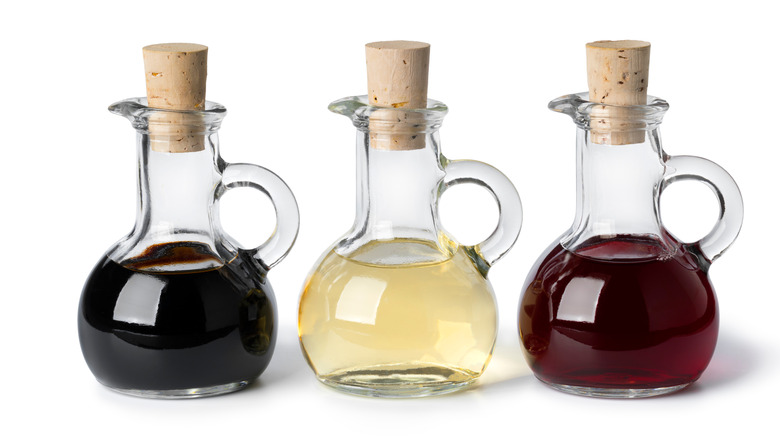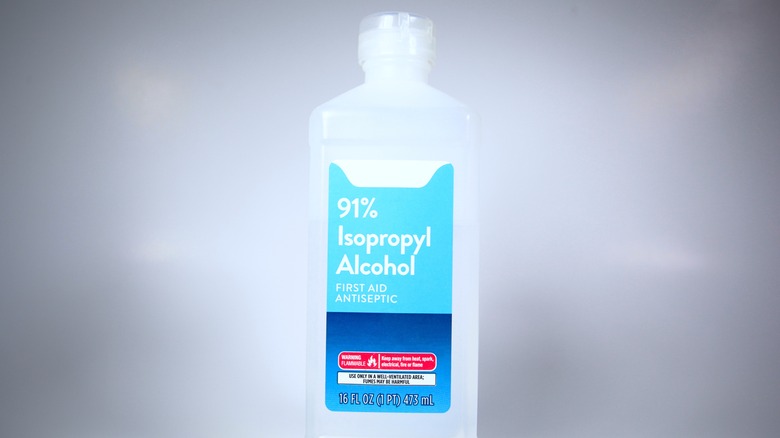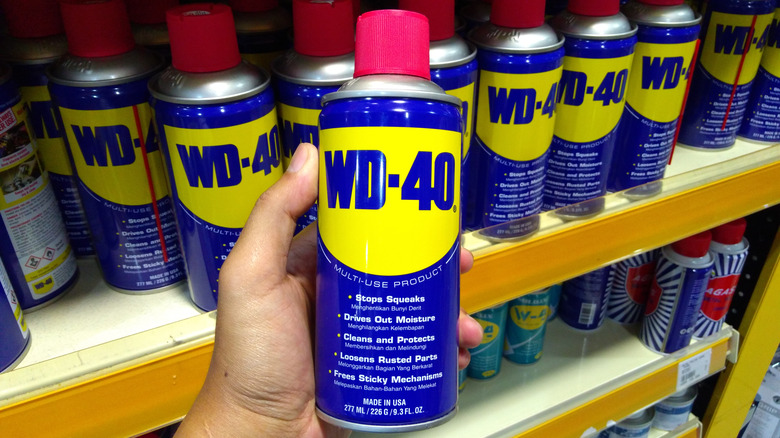Simple Ways To Remove Sticker Residue From Your Clothes
For you, deciding which is worse might be a toss-up: removing a store sticker from a piece of glass (like a mirror or picture frame) or an article of clothing. If you're experienced at both tasks, you might say stickers on clothing pose a particular challenge, if only because some sticky residue often remains behind, clinging to the fibers. And who wants that gunk on clothing?
This reality underscores why it helps to arm yourself with several removal tactics. One tactic may work great on wool but not very well on synthetics. So, being tenacious and patient will help you part of the way. Just be sure to get off to the right start by testing the tactic on an obscure area — for example, a hem or cuff that most people cannot see, Better Homes & Gardens recommends. Who knows? Way back when, this strategy may have brought an important removal lesson to light: oil-based tactics such as olive oil, canola oil, and even peanut butter can leave a permanent mark behind, ProHousekeepers says. So, you weren't exactly wide of the mark if you said a somber goodbye to your favorite silk blouse after a droplet of salad dressing landed on your sleeve.
No matter which article of clothing you're working with, try to lift as much of the sticker residue with your finger or fingernail before you press one or more of these five removal tactics into active duty.
Try hot water first
You might call hot water the path of least resistance, but why not try to go the H2O route before rummaging through cabinets or closets in your home for a removal agent? You don't have to submerge your entire article of clothing in hot water — just the part that contains the sticker and/or residue. The hot water should dissolve the glue, an action that won't occur with cold water, Better Homes & Gardens says. Move the process along, if you wish, with a few drops of mild dish soap. Then scrape away the remains of the sticker.
You may have to make a second pass — with this tactic and the other ones. It's just a matter of time before that sticker, and all traces of it, become history.
Marshal acetone's cutting power
If you agree that removing stickers from clothing is tougher than lifting them from glass, you may be of the mind that nail polish remover — also known as acetone — is the smelliest of the removal methods. But you probably won't be able to quibble with the results: acetone works. (You should be extra careful to test it first on acetate, rayon, and silk, Tips Bulletin says. Acetone may be too strong for these light, delicate fabrics, causing them to discolor.)
Unless you have a better way to create a work zone, box off the sticker and/or residue with masking tape. Then put the article of clothing on a hard surface with a few paper towels underneath it (in case the acetone seeps through). Dip a cotton ball in the acetone to wet it, not drench it, and rub it on the fabric. (If you're hoping that nail polish remover can work as quickly on chewing gum stuck on clothing, it's definitely worth a try.)
White vinegar rises to another challenge
If a spray bottle of white vinegar mixed with water is never far out of your reach, you may have figured that it might be good at removing sticking residue, too. And you're right.
Soak the sticker and/or residue with a 50/50 mix of white vinegar and water and let it soften for a few minutes, Better Homes & Gardens says. Then wipe or scrape away the residue. White vinegar has literally dozens of ways to be useful around the house — from cleaning counters and windows to microwaves and showers, Tips Bulletin says. It's been known to make a mean marinade, too.
Open a bottle of rubbing alcohol
Similar to white vinegar, rubbing (or isopropyl) alcohol has multiple applications. It's good to have for household cleaning chores (like removing pesky stickers). And it can be used as an astringent, antiseptic, and surface disinfectant, Healthline explains.
It's okay to use on clothing made of linen and silk (as well as cotton and polyester), but should be tested first on acetate and rayon. It may be too strong for these delicate fabrics, according to Tips Bulletin. To avoid drips, wet but don't soak a cotton ball with rubbing alcohol. Then gently rub the sticker and/or residue until it's a faded memory.
Reach for the WD-40
Many people think of WD-40 as a lubricant, and it makes a superb one. Just take a look at the company website and the 2,000 uses to its credit. WD-40's reputation casts a large shadow. This petroleum-based product is often assumed to be almost too powerful for many household tasks, like removing scuff marks from ceramic floors and stickers from all types of surfaces. This is part of WD-40's beguiling charm: it doesn't tolerate any nonsense from hostile sources but remains gentle and protective. (If it weren't, you couldn't use it to add shine to the leaves of artificial plants, among other things.)
Stickers are toast once they're soaked with WD-40 and you scrape away the fragments. Your garment should be as good as new after a run through the washer. Then you'll have only 1,999 more uses to go.
